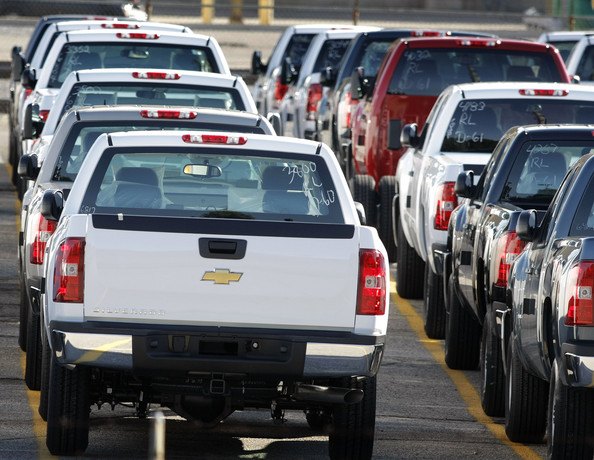General Motors, Channel Stuffing And The Return Of 2008
A lawsuit filed by a Florida investor against General Motors over the age-old practice of “channel stuffing”, or sending inventory to dealers and recording it as a “sale”, so that revenue numbers can be pumped up while the vehicles languish on dealer lots. The practice of channel stuffing is universal in the auto industry, but in this case, the consequences are much broader.
The specifics of the lawsuit, which hinge on specific phrases in the IPO prospectus, can be found here. The class action suit is unlikely to do any serious damage to GM, and will likely be the site of a long, protracted legal battle. The implications of channel stuffing are what really matter, and may provide a glimpse into both General Motors, and its government stewardship.
While General Motors is touting their 32 percent year-over-year increase in sales, a closer look at the numbers reveals a couple of things. According to Bloomberg, inventory for full-size trucks was at a 135 day supply, as GM ostensibly cranked out profitable pickups and sent them off to dealers across the land, allowing them to book sales of their most lucrative vehicles just in time for the half-way mark – and coincidentally (or not), government purchases of GM vehicles rose 79 percent in June. Retail sales were up a mere 8 percent, while fleet sales rose by 36 percent.
There is a political argument to be made for all of this, with GM’s financial health being integral to President Obama’s re-election, and a validation of the auto bailout and his economic policies. The Treasury still owns a 32 percent stake in GM, and selling their shares now would mean a major loss of taxpayer money. If GM’s fortunes were to reverse, than a quick exit, perhaps at a profit, might be possible.
The inflated inventories and “channel stuffing” aren’t just a manipulative way to make GM’s numbers look better than they are – they also expose GM to a potentially dangerous financial situation similar to 2008. General Motors, like any other car company, must sell the cars it builds. Its inventories are much higher than other manufacturers. Prior to the bailout, GM was caught out with large inventories of full-size trucks and SUVs at a time when a poor economy and rising gas prices made them unattractive to consumers. This same scenario occurring again isn’t inconceivable.
More by Derek Kreindler
Latest Car Reviews
Read moreLatest Product Reviews
Read moreRecent Comments
- MaintenanceCosts Poorly packaged, oddly proportioned small CUV with an unrefined hybrid powertrain and a luxury-market price? Who wouldn't want it?
- MaintenanceCosts Who knows whether it rides or handles acceptably or whether it chews up a set of tires in 5000 miles, but we definitely know it has a "mature stance."Sounds like JUST the kind of previous owner you'd want…
- 28-Cars-Later Nissan will be very fortunate to not be in the Japanese equivalent of Chapter 11 reorganization over the next 36 months, "getting rolling" is a luxury (also, I see what you did there).
- MaintenanceCosts RAM! RAM! RAM! ...... the child in the crosswalk that you can't see over the hood of this factory-lifted beast.
- 3-On-The-Tree Yes all the Older Land Cruiser’s and samurai’s have gone up here as well. I’ve taken both vehicle ps on some pretty rough roads exploring old mine shafts etc. I bought mine right before I deployed back in 08 and got it for $4000 and also bought another that is non running for parts, got a complete engine, drive train. The mice love it unfortunately.


































Comments
Join the conversation
When the sh!t hits in Japan do you think thier government is going to let honda die? Would the Germans have let VW die in it's darkest days? The french? Hell even the british tried to save what was left, w/o understanding 100 years of relying on the colonial system had left its industry completely uncompetitive or repairable (my grandmother has pictures of shops in the 70's with signs saying "goods not made in england". Just as Carter having the balls to tell america that the results of WWII had allowed us to live in a dream land for 30+ years and was about to end and we better adjust and adjust quickly was derided, he was quite right (first USW, then the remainder of the rust belt and NE less the UAW and finally the UAW).
The Japanese government just recently bailed out and merged Sony, Toshiba, and Hitachi small and medium screen display manufacturers together and called it Japan Display. This is exactly what the South Korean government did for Hyundai and Kia when they were on the rocks a decade ago. All America's trading partners are state socialists at home and held up as pure capitalist heroes over here for political reasons. It's decadent so many Americans don't root for the home team and root for state socialist products from nations that we were at war with not that very long ago.